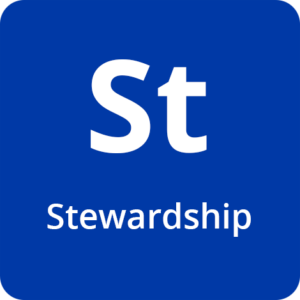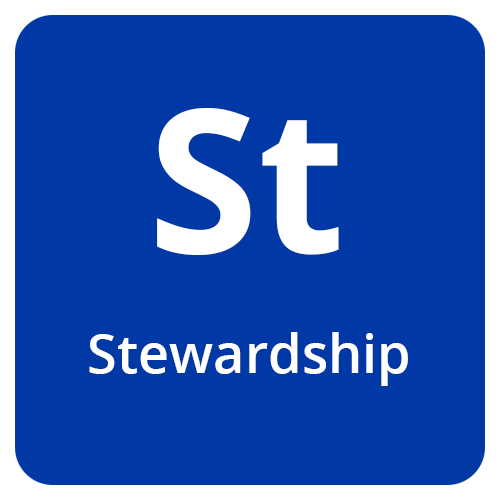 Stewardship involves local wellness fund leaders and partners accepting or assigning responsibility for shepherding and safeguarding the resources in the fund. In health and health systems, the notion of stewardship combines an “ethical and moral dimension with managerial principles of efficiency and effectiveness”. The latter is often seen as the domain of governance. Collaborators with the responsibility for the health of a community act as stewards when “they exercise authority and employ resources for the common good above and beyond narrow efficiency and effectiveness objectives.”¹
Stewardship involves local wellness fund leaders and partners accepting or assigning responsibility for shepherding and safeguarding the resources in the fund. In health and health systems, the notion of stewardship combines an “ethical and moral dimension with managerial principles of efficiency and effectiveness”. The latter is often seen as the domain of governance. Collaborators with the responsibility for the health of a community act as stewards when “they exercise authority and employ resources for the common good above and beyond narrow efficiency and effectiveness objectives.”¹
Stewardship may look different depending on the local wellness fund. For some, a strong backbone organization can contribute to stewardship by holding partners accountable. For others, stewardship may be blended among the partners, and partners will need to jointly agree on shared purpose and roles. Developing collective stewardship involves defining a clear shared purpose, having the right people in the room, and setting up governance that allows for productive meetings, idea sharing and healthy conflict resolution.
As a local wellness fund is developed and grows, it is important that the stewardship structure, among diverse partners who may have traditionally been in competition, grows and/or changes appropriately. For some funds, public accountability has been a successful strategy to keep the group mutually accountable to others. As a part of financial stewardship, local wellness fund partners will need to build capabilities for financial management, budgeting, billing and accounting, grantmaking, analysis & financial reporting and fundraising. Many local wellness funds are also working to build capital absorption capacity to bring new investment into a community where it is needed most.

Stewardship involves local wellness fund leaders and partners accepting or assigning responsibility for shepherding and safeguarding the resources in the fund. In health and health systems, the notion of stewardship combines an “ethical and moral dimension with managerial principles of efficiency and effectiveness”. The latter is often seen as the domain of governance. Collaborators with the responsibility for the health of a community act as stewards when “they exercise authority and employ resources for the common good above and beyond narrow efficiency and effectiveness objectives.”¹
Stewardship may look different depending on the local wellness fund. For some, a strong backbone organization can contribute to stewardship by holding partners accountable. For others, stewardship may be blended among the partners, and partners will need to jointly agree on shared purpose and roles. Developing collective stewardship involves defining a clear shared purpose, having the right people in the room, and setting up governance that allows for productive meetings, idea sharing and healthy conflict resolution.
As a local wellness fund is developed and grows, it is important that the stewardship structure, among diverse partners who may have traditionally been in competition, grows and/or changes appropriately. For some funds, public accountability has been a successful strategy to keep the group mutually accountable to others. As a part of financial stewardship, local wellness fund partners will need to build capabilities for financial management, budgeting, billing and accounting, grantmaking, analysis & financial reporting and fundraising. Many local wellness funds are also working to build capital absorption capacity to bring new investment into a community where it is needed most.
Rethink Health: Stewards Pathway
The Stewards Pathway from Rethink Health is a collection of resources that local wellness funds can use to work through setting up essential practices of stewardship including setting up shared vision, governance, strategies and financing.
Board Development Checklist
This resource, adapted from the Katahdin Trust, presents a checklist of steps for recruiting and establishing a Board of Directors. Local wellness funds can use this tool to help them build or grow a board of directors to help guide their fund.
Example Bylaws for Governance Committee
This resource, adapted from the Katahdin Trust, provides sample bylaws for a network or partnership. Local wellness funds can use these sample bylaws to draft governance documents for their partnership or collaborative.
Western Idaho Community Health Collaborative (WICHC) Charter
This is a governance document from the Western Idaho Community Health Collaborative. This resource provides local wellness funds with an example of how a fund outlined their key functions, membership structure, member expectations, and meetings.
Cityville: A capital absorption story
This blog post and short video from the Center for Community Investment provides and introduction to capital absorption. Local wellness funds can use this video to start learning about the key components of the capital absorption framework and how it can help bring funding into disinvested communities.
Capital Absorption: Diving into Shared Priorities, Pipeline, and Enabling Environment
This is a collection of three briefs from the Center for Community Investment that define and provides details on the three key components of the capital absorption framework: shared priorities, pipelines and enabling environment. Local wellness funds can use these briefs to explore definitions, examples and tips on how to enact the capital absorption framework.
- Saltman, R. B., & Ferroussier-Davis, O. (2000). The Concept of Stewardship in Health Policy. Bulletin of the World Health Organization, 78(6), 732–739. https://www.ncbi.nlm.nih.gov/pmc/articles/PMC2560782/



